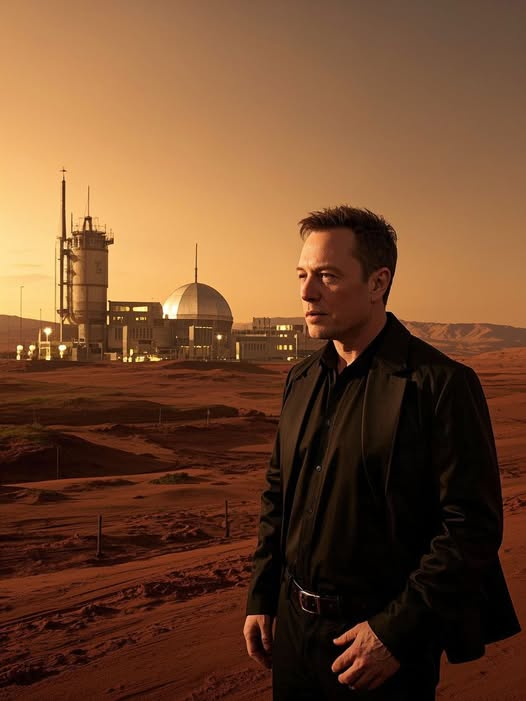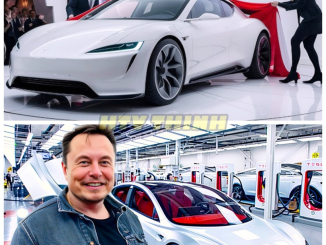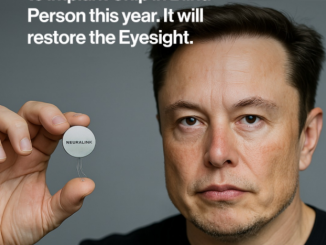
Elon Musk, the maverick mind behind SpaceX, Tesla, and Neuralink, has never shied away from ambitious goals—but none may be grander, or more important to him, than his dream of creating a permanent, self-sustaining city on Mars. This isn’t just another tech billionaire’s whimsy; it’s a strategic vision for the survival and expansion of humanity, built on the foundations of science, engineering, and Musk’s relentless drive to defy the impossible.
🚀 Starship: The Engine of Interplanetary Ambition
At the heart of Musk’s Mars vision is Starship, SpaceX’s fully reusable, stainless steel spacecraft designed to revolutionize space travel. Capable of lifting up to 150 tons of cargo or 100 passengers, the Starship is unlike anything the world has ever seen—a giant leap beyond even NASA’s most powerful rockets.
Musk believes that reusability is the key to affordability. By drastically reducing the cost of getting payloads into orbit—from billions to just a few million dollars—Starship could make interplanetary travel not just feasible but scalable. SpaceX has already demonstrated this model with its Falcon 9 rockets, which land vertically and fly again, slashing costs and timelines across the aerospace industry.
But Starship is a different beast. It’s designed to launch, land, and relaunch—on both Earth and Mars. In Musk’s own words: “You want to wake up in the morning and think the future is going to be great. That’s what being a multiplanet species is about.”
🌍 A Million Souls on Mars: The Long-Term Vision
Musk isn’t content with planting a flag or sending a few astronauts to Mars. His ultimate goal? A thriving city of one million people, built from the Martian soil itself. He envisions a fleet of thousands of Starships, each transporting materials, infrastructure components, and eventually settlers to Mars in a series of launch windows timed every 26 months—the period when Earth and Mars are optimally aligned.
The early missions—targeted as soon as 2026—will be uncrewed cargo runs, bringing life-support systems, tools, and autonomous machinery to prepare the site. Human crews would follow by the early 2030s, tasked with constructing habitats, deploying solar farms, and beginning the grand experiment of living on another world.
Musk’s plan includes:
- Hydroponic agriculture for sustainable food production
- Solar power systems to fuel life and machinery
- 3D-printed habitats made from Martian regolith
- Life-support systems that recycle air and water
It’s a bold bet on in-situ resource utilization (ISRU)—the idea that humans can use local Martian materials to build and survive, rather than relying on constant resupply from Earth.
🌡️ Terraforming: Warming Up a Frozen World
Beyond survival, Musk dreams of terraforming Mars, a process that could span decades or even centuries. His idea? Release carbon dioxide trapped in Martian ice caps and soil to thicken the atmosphere and raise temperatures, slowly transforming the planet into something more Earth-like.
While many scientists argue that current Mars conditions—low pressure, intense radiation, and extreme cold—make such goals wildly speculative, Musk remains undeterred. His philosophy is simple: “If we don’t try, we’ll never know.”
Over time, technologies could evolve to produce breathable air, shield colonists from radiation, and even generate precipitation. Musk has spoken about nuking the poles (a controversial idea) to trigger atmospheric changes, though he’s also discussed more gradual approaches, like giant solar reflectors or genetically engineered microbes to seed the environment.
🛡️ Dangers and Doubts: Is Mars Really Humanity’s Backup Plan?
Critics are quick to highlight the immense risks involved. Radiation exposure, psychological strain from isolation, global dust storms, and limited medical care are just a few of the major challenges. The sheer cost—estimated in trillions of dollars—raises additional eyebrows.
But Musk isn’t trying to eliminate risk. He’s trying to create options. In his words, humanity is currently living with “all our eggs in one basket.” From asteroid impacts to climate change and pandemics, Earth isn’t immune to catastrophe. A backup plan—no matter how wild it seems—may be essential for long-term survival.
And that plan, in Musk’s eyes, starts with Mars.
🔬 From Sci-Fi to Reality
Musk’s fascination with space didn’t begin in a boardroom—it began with science fiction. Inspired by authors like Isaac Asimov, Arthur C. Clarke, and especially Douglas Adams and The Hitchhiker’s Guide to the Galaxy, he grew up dreaming of a future among the stars.
Now, he’s trying to build that future, one rocket at a time.
Musk’s 80-hour workweeks, his investment of billions of personal dollars, and his refusal to accept conventional limitations have made him a polarizing figure. But no one can deny the impact: from reusable rockets to private astronauts and satellite internet, he has already reshaped the space industry.
🪐 Final Approach: Is Mars Within Reach?
As of 2025, SpaceX continues to test Starship at its Starbase facility in Texas, with orbital launches pushing the limits of engineering. Governments, private companies, and space agencies are watching closely. NASA has even selected Starship as the lunar lander for its Artemis Moon missions, lending credibility to Musk’s grander goals.
Whether or not we see a city on Mars by 2050, Musk has already moved the Overton window of what’s possible. Colonizing another planet is no longer just a fantasy—it’s a mission.
And Elon Musk? He’s the one holding the map.


